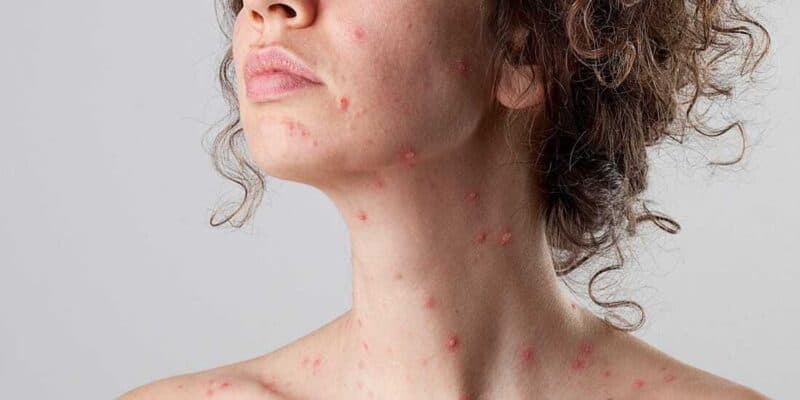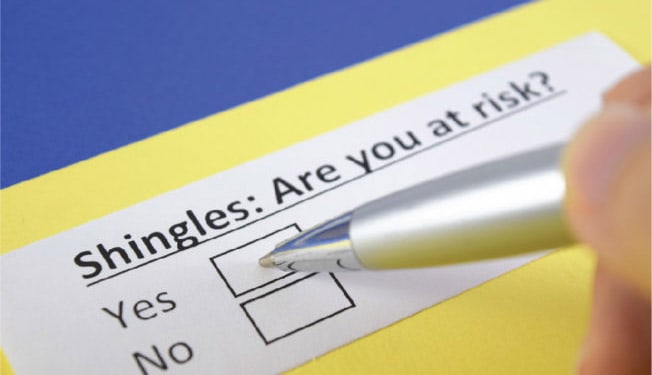
The varicella-zoster virus is what triggers this condition and the same virus is responsible for chickenpox. Once an individual has shingles, it can be spread to someone else. This person will have an increased risk of developing chickenpox, provided they have not already had it or been vaccinated. Although relatively uncommon, the varicella-zoster virus can be contracted from extremely contagious lesions by touching the blisters.
The virus will remain within the nerve tissues of the individual for their entire life. During this time, the virus usually remains in an inactive state. Should the immune system of the individual be unable to contain the virus, it can become active again many years later. The result is the development of this condition.
How Does the Virus Spread?
Once an individual develops this condition, the virus can be spread to anybody who has never had chickenpox. For an individual who has had chickenpox, their body usually has antibodies for protection against the virus. The virus often causes oozing, open blisters, and can spread when contact is made with these blisters before they scab.
Anyone who has never had chickenpox is at risk of contracting the virus when contact is made with oozing blisters. Once crusty scabs have formed over the blisters, the virus will not spread because the blisters are no longer exposed and contagious. The blisters must be completely covered before the risk is eliminated. Contact with the infected individual’s nasal secretions or saliva will only transmit the virus in rare cases.
This means the risk of contracting the virus is extremely low if the infected individual sneezes or coughs. The condition can occur in individuals of any age due to a reactivation of the virus already in the body. The people most often affected by this condition are in their 60s or 70s. This virus is common with almost 50 percent of the population of the United States, showing symptoms by the time they reach the age of 80.
When the immune system weakens, the virus is more likely to reactivate. The risk is higher for stressed or ill individuals. Shingles cream is often used to help treat the symptoms. The best cream for shingles will soothe the skin while helping to decrease both pain and itching.
Preventing Transmission of the Virus
Some methods decrease the chances of spreading the varicella-zoster virus. The virus is less likely to be transmitted if the individual has chickenpox. The virus is extremely contagious from the time symptoms appear until the blisters and rash are completely dry and covered with a crusty scab. If the individual has contracted the disease while healthy, they can go to work or be in public places. Before venturing out in public, the following tips should be observed.
 The rash should not be scratched or touched. This is extremely important before a crust forms over the rash. Using a loose dressing to cover the rash can help. Both hands should be washed often to help prevent transmission. Anyone with an active rash should take care not to come in contact with pregnant women who have never been vaccinated or had chickenpox.
The rash should not be scratched or touched. This is extremely important before a crust forms over the rash. Using a loose dressing to cover the rash can help. Both hands should be washed often to help prevent transmission. Anyone with an active rash should take care not to come in contact with pregnant women who have never been vaccinated or had chickenpox.
If chickenpox is contracted by a pregnant woman between five and 21 days before having the baby, it can be dangerous for the child. Serious health issues can result in both pregnant women and their babies. This includes both congenital disabilities and pneumonia. If an individual has accidentally placed a pregnant woman at risk, she must be informed immediately.
Her best option is contacting her OB/GYN to discuss the possible options and recommendations. Extreme care should be taken around pregnant women who have not been vaccinated or had chickenpox. Children not vaccinated or those who have not had chickenpox should avoid coming into contact with the blisters to decrease the risk of complications or illness. arti nama
The risk of transmission significantly increases for anyone having chemotherapy or taking immunosuppressant medications. Individuals with the virus should also be avoided by anyone with a weak immune system, including the following:
- Premature infants and infants with a low birth weight
- Individuals with organ transplants
- Individuals taking medications known to suppress the immune system
- Individuals with specific health conditions including leukemia, HIV and lymphoma
Should any individual in one of the above groups contact the virus, the risk of their immune system being unable to adequately contain the virus is extremely high. If the person has not had chickenpox in the past, there is a good chance they will contract the virus. This increases the risk of developing the disease and the resulting complications. The disease often has more severe symptoms for these individuals in addition to lasting for a longer time period.
The best way to ensure the virus does not spread while in public is to keep the rash covered to prevent anyone from coming into contact with the blisters. Touching the blisters increase the risk of spreading the disease.
The Risk Factors

Individuals with the highest risk of developing shingles include:
- Individuals who have had chickenpox
- Anyone born prior to 1980
- Individuals above the age of 60
- Individuals with a weak immune system
Individuals suffering from any of the following conditions are also at a higher risk for developing the virus.
- Asthma
- Systemic lupus erythematous
- Diabetes mellitus
- Rheumatoid arthritis
- COPD or chronic obstructive pulmonary disease
Individuals using statin medications or experiencing any physical trauma are also at a higher risk. If there are concerns regarding developing this disease, a physician should be contacted to discuss methods to decrease the risk or vaccinations. There is a vaccine for the disease, which will decrease the risk of contracting the disease.
This is an effective way to prevent nerve pain linked to this condition. Anyone above the age of 60 should seriously consider getting the vaccine. A physician can answer any questions the individual may have.
